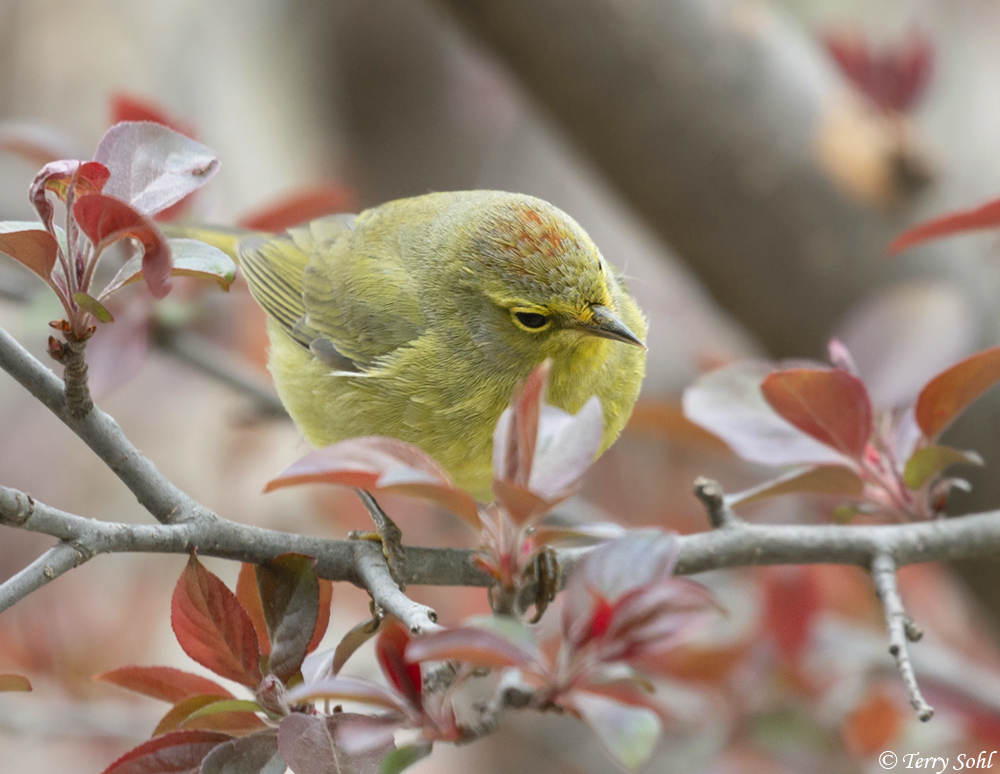
When I woke this morning, I had no idea that by the end of the day, I would have solved one of life’s three biggest mysteries. These are questions of profound importance that have bedeviled mankind ever since we pulled ourselves out of the muck, learned to walk upright, and started pointing binoculars at birds. Of course I’m talking about the “Big 3”:
- Does a Ring-necked Duck have a ringed neck?
- Where’s the red on a Red-bellied Woodpecker’s belly? and,
- What color crown does an Orange-crowned Warbler have?

Now, Orange-crowned Warblers are one of the most common migrant warblers we have in the state, just behind the Yellow-rumped Warbler. But you know what my friends? YELLOW-RUMPED WARBLERS ACTUALLY HAVE, like, you know…YELLOW RUMPS!!! So where does that leave us with Orange-crowned Warblers?
I always thought the naming of Orange-crowned Warblers was kind of a cosmic joke. Someone saw a rather plain bird with a touch of color but really no contrasting features whatsoever, and said…HEY! Let’s have some fun with this! Instead of something like “Drab Olive Warbler”, let’s call it an Orange-crowned Warbler!
After seeing a number of Orange-crowned Warblers, tonight I’d had enough. When one started flitting around the crabapple tree right outside my sunroom window, I decided to get down to the bottom of it all. Now, my wife knows I talk to birds. Hell, I do it all the time, particularly when I really get excited! You can be DAMNED sure that when I saw that Whooping Crane a week and a half ago that we had one of the longer, more fulfilling conversations I’ve ever had in life. Usually I just say whatever pops into my head, with deep, thoughtful conversational elements such as “hey sweetie!!”? Or “You’re a pretty bird!” When a bird is extremely cooperative and has allowed a number of good photos, it’s not unusual for me to toss out a “Thank you sweetie” as I depart. (If you’re wondering…sadly for me…every word of this is true).
Now, I admit those conversations are usually very one sided, so today when I started talking to the Orange-crowned Warbler in my crabapple, I wasn’t expecting the bird to engage. However, much to my surprise, when I softly muttered “now where’s that supposed orange crown of yours?”, the bird paused, gave me a thoughtful stare, and then proceeded to dip his head and hold a pose for several seconds, as if to say “Hey, dumbass…I’ve got your orange crown right here”.
And that, as they say, is that! A few clicks of the camera shutter, some evidence of orange feathering on the crown, and one of life’s greatest mysteries is solved.
